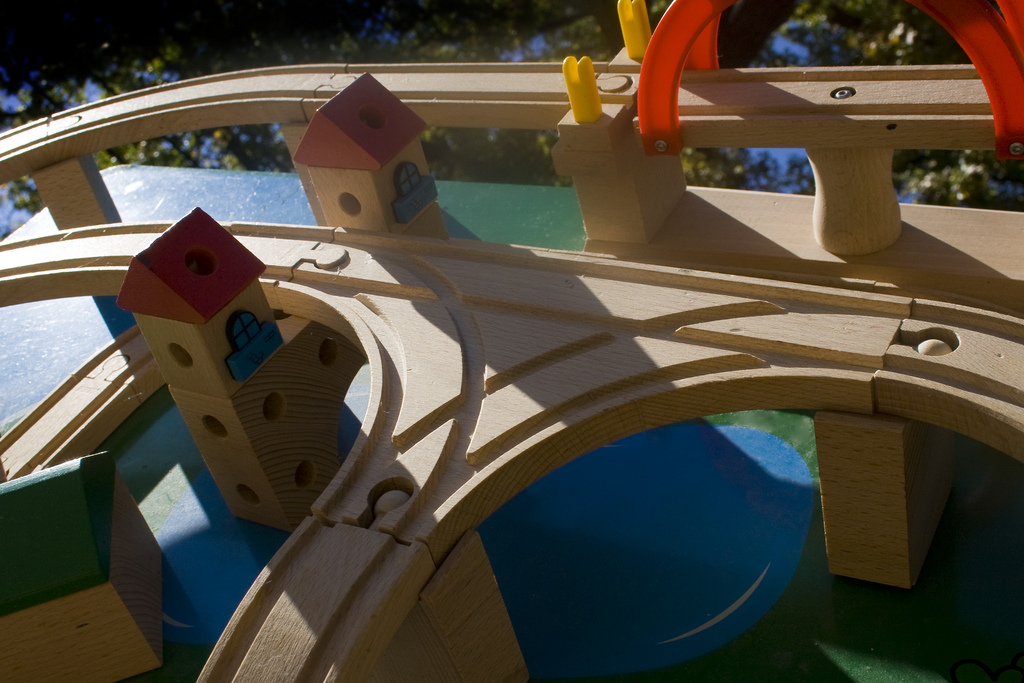Like this article? Chip in to keep stories likes these coming.
Infrastructure spending was a dominant topic of discussion when Canada’s premiers met in Ottawa on January 30, according to an article in iPolitics.
Ontario Premier Kathleen Wynne has issued repeated calls for greater federal infrastructure spending. She invited Prime Minister Stephen Harper to the premiers’ meeting. He declined. Instead, his finance minister, Joe Oliver, released a statement strongly rejecting new spending, while touting his government’s $75-billion commitment to infrastructure over a 10-year period.
All agree that infrastructure spending is important, but what’s the long-term plan? Is infrastructure spending being used like a spigot, to be turned on and off depending on the state of the economy?
If short-term economic stimulus is the only goal it may not matter how infrastructure money is spent — gazebos and toilets are just fine. If the well-being of Canadian citizens is the goal it certainly does matter. Infrastructure encompasses vitally important areas: buildings, transportation, energy, water and waste management, research, health care, culture, recreation and natural heritage.
The Conservatives’ 2009 budget — forever after trumpeted as “Canada’s Economic Action Plan” — enshrined the concept that the primary goal of infrastructure spending is economic stimulus. To quote, “Budget 2009 accelerates and expands the recent historic federal investment in infrastructure with almost $12 billion in new infrastructure stimulus funding over two years, so that Canada emerges from this economic crisis with more modern and greener infrastructure.”
Federal officials deserve thanks for managing those funds and helping Canada weather the economic crisis. But a one-time spending spree is not enough. Modern, greener infrastructure requires ongoing investment and careful planning, co-ordinated across levels of government.
The Harper government has been missing in action. It discourages co-operation between federal, provincial/territorial, and municipal officials. Mr. Harper himself sets the tone, refusing to meet with provincial premiers as a group.
Furthermore, the 2009 budget was an exercise in greenwashing. A word search for the term “green” (including “greenhouse gas”) shows that it appeared 45 times in the 2009 budget, but only three times in the 2014 budget. It’s no secret that Mr. Harper’s commitment to the environment has vanished: his budgets prove it.
The United Nations Environment Program documents how “greener” investments sustain the economy over the longer term. Canada has missed the boat. A $1-billion “Green Infrastructure Fund” in the 2009 budget — for green energy, carbon storage, sewage treatment, etc. — was supposed to run until 2014. The government prematurely terminated it in 2011 and transferred the remaining $215 million to “other priorities.”
The 2012 federal budget reported on the infrastructure spending spree that began in 2009. The title of its Annex 2 — A Final Report to Canadians — makes some of us wish that this had truly been Mr. Harper’s final report, rather than a final report on his brief conversion to Keynesian economics.
What is happening now? A “Building Canada Fund” launched in the 2013 budget (Mr. Oliver’s $75 billion over 10 years) is largely smoke and mirrors. Nowhere in that budget is there a clear commitment to spend $75 billion on infrastructure. A $4-billion “National Infrastructure Component” is overseen by the federal government through a merit-based application-driven process, but the remainder of the “Fund” has virtually no strings attached (that is, it need not be spent on infrastructure). Its largest component is the transfer to provinces and territories of a portion of the federal excise tax on gasoline and diesel fuel, and its second-largest component is GST rebates to municipalities.
This means that the federal government has basically withdrawn from long-term, collaborative planning in water, energy, transportation and housing infrastructure, downloading responsibility to other levels of government.
The work of creating modern and green infrastructure need not require huge new expenditures. It can largely be done through progressive codes, standards and regulations. We pay the salaries of tens of thousands of smart federal civil servants who could do this work. It would create a rational basis for future infrastructure investments.
But the world seems to be moving into a post-rational era, based on ideology rather than science. The Harper government’s inability to make strategic, well-planned investments in key areas such as energy and transportation creates huge risks that Canada’s economy will lurch from crisis to crisis.
In hindsight, it is clear that the short-term economic stimulus in the 2009 budget did not provide lasting benefits to Canadians. Its political history is worth recalling. In November 2008 a newly minted minority Harper government tabled a fiscal update in Parliament that, among other things, ignored the global financial crisis and the need for economic stimulus. Opposition parties — led by Jack Layton and Stephane Dion — agreed to work together in a coalition government. Mr. Harper avoided a confidence vote by persuading Governor General Michaëlle Jean to prorogue Parliament. He then secured the support of the Liberal Party for his 2009 budget after the Liberal caucus in Parliament replaced Stephane Dion with Michael Ignatieff as interim leader in December 2008.
The current majority Conservative government needs no support from other parties. But in postponing the release of a 2015 budget, Stephen Harper and Joe Oliver have signalled that they are worried about the economy. Canadians’ faith in Mr. Harper as a sound manager of the economy was, ironically, largely based on his 2009 budget and the temporary economic stimulus it provided — at odds with his true beliefs. He has since reverted to form.
Canadians may now be recognizing that austerity, government downsizing and tax cuts are not a prescription for a healthy economy over the longer term. Mr. Harper is scrambling to “change the channel.”
Terrorism, anyone?
Ole Hendrickson is a forest ecologist and current president of the Ottawa River Institute, a non-profit charitable organization based in the Ottawa Valley.
Photo: woodleywonderworks/flickr
Like this article? Chip in to keep stories likes these coming.




